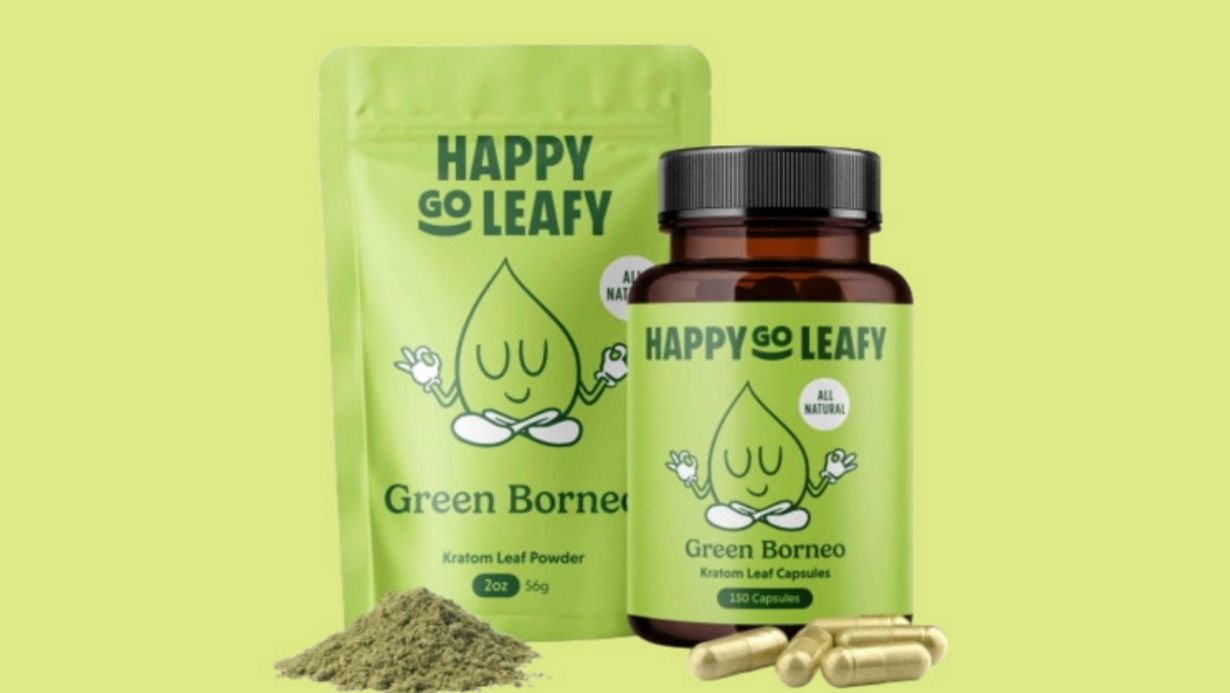How Long Does Kratom Last?
Prague Morning

It is related to the trees that produce coffee. Its leaves are recognized for their distinctive effects, including the duration of these effects. The chemicals found in kratom leaves can have varying impacts on consumers based on the amount consumed.
It stimulates the body and gives an energy boost in small dosages. It can have a relaxing, tranquil effect when taken in larger doses. How long these feelings last depends on the amount taken and each person’s body.
Small amounts usually give energy for a couple of hours, while more significant amounts can relax you for several hours. The exact time varies for each person.
Many users turn to Kratom for different reasons, some to ease pain, others to pep up their energy or improve concentration. It’s also picked up for helping with sleep, boosting mood, or tackling anxiety and sadness.
What Is Kratom?
Kratom’s popularity in regions (Thailand, Papua New Malaysia, Indonesia, and Papua New Guinea) has now sparked global interest. In the U.S., kratom’s emergence is significant, often viewed as a health supplement within the natural health trend.
It’s commonly used for social anxiety relief and pain management, offering an affordable alternative. However, this perception as merely a supplement can overshadow its potential risks. People utilize Kratom for purposes including pain management and assistance with withdrawal.
Nevertheless, it’s important to acknowledge that the legality of Kratom varies depending on the region, and continuous research is being conducted to examine its long-term impact and safety.
Kratom’s easy availability in drinks and health bars might lead to underestimating its impact, similar to how people perceive coffee. However, its overuse should be approached with seriousness, emphasizing the importance of risk awareness.
In amounts, kratom acts as a stimulant, providing energy and heightened alertness. However, when taken in doses, it induces effects and promotes relaxation. Additionally, it is known for its pain-relieving properties.
Kratom is primarily classified based on the color of its leaf veins, resulting in three types.
- Red Vein,
- White Vein, and
- Green Vein Kratom.
Red Vein Kratom is famous for its pain-relieving properties and is also well known for its sedative properties.
White vein kratom strains can help those who struggle with anxiety or need a little mood-boosting throughout the day. After taking a white vein strain, you might discover that a difficult day is a little easier to grab and handle.
Despite its conventional usage, kratom’s legality is blended globally due to concerns over fitness dangers and ability addiction. In its local regions, it remains a conventional treatment.
How Long Does Kratom Stay in Your System?
Leading the question of how long it stays in the system. The duration of Kratom is detectable in the body, which hinges on various factors. The type and amount of Kratom consumed are critical; different strains contain different levels of active compounds, and larger doses take longer to process.
Frequency of use also affects Kratom’s presence in the system. Regular users will likely have Kratom in their systems longer than occasional users due to compound accumulation over time. Individual metabolism plays a significant role, too.
Users whose bodies have fast metabolism systems and purge Kratom faster than those with a slower metabolism. Many factors, including age, health, and genetics, affect this.
Since Kratom interacts with the liver enzymes that digest medications, liver function can elongate the time Kratom remains in the body. Furthermore, body fat percentage is important because Kratom compounds are fat-soluble, and the higher the body fat percentage, the longer the retention time.
Hydration and diet also impact how Kratom is metabolized. Proper hydration aids in quicker processing and elimination. Kratom’s half-life is about 24 hours, and it can be detected in urine for several days post-use.
However, these durations vary based on the mentioned factors. As Kratom’s legal status and health effects are still under study, users should be mindful of its potential lingering presence in their bodies.
Does Kratom Show Up on a Drug Test?
Given its well-known stimulant and sedative properties, there are concerns over the detectability of kratom in drug tests. The simple explanation is that kratom typically passes regular drug tests without being detected.
Kratom does not show on standard drug screen results for substances like marijuana, cocaine, opiates, and amphetamines because it includes special chemicals like mitragynine and 7-hydroxymitragynine.
However, specialized tests designed to detect kratom do exist. While not commonly used, these tests can identify kratom’s specific compounds.
This consists of blood tests that can spot kratom for a few days after use, and urine tests may detect it for a week or more, depending on how much and how often someone uses it.
It depends on factors like metabolism and body composition, as well as how quickly kratom is processed and eliminated from the body.
The likelihood of being tested for kratom largely depends on its legal status and perception in a particular region. In legal areas and where it is less controversial, it is unlikely to be included in drug screening panels. However, in places with stricter kratom regulations, tests for it might be more prevalent.
The Uses of Kratom
Southeast Asian plant kratom has long been used to treat a variety of illnesses. However, It is important to remember that more research must be done. The following are some situations when Kratom may be beneficial:
Anxiety Relief: People often use Kratom to help manage anxiety. It’s believed to have calming effects that can ease anxiety symptoms.
Cough Suppression: Some suggest that Kratom can help soothe coughs, though this use is not widely documented or supported by substantial research.
Depression Management Kratom: Kratom is sometimes used as a mood enhancer, which might help alleviate symptoms of depression. However, its effectiveness for this purpose is not conclusively proven.
Opiate Withdrawal: Kratom is perhaps most commonly cited as a way of suppressing withdrawal symptoms from opiates. It may possess opioid-like effects without the danger of addiction.
Pain Relief: Kratom is widely used for pain management. Its compounds can interact with pain receptors in the brain, relieving various types of pain. Although users report these side effects extensively, it is important to approach Kratom with caution, as individual reactions can vary, and overuse can cause side effects if it is possible.
Insomnia Treatment: Kratom strains have soothing properties, which makes Kratom helpful in treating insomnia and restful sleep. Due to these properties, Kratom induces relaxation and drowsiness and helps individuals with sleep-related disorders or patterns to achieve a consistent sleep cycle.
Improved Concentration: Kratom has one of the properties seen by its users as cognitive enhancement, especially with concentration and focus.
This makes Kratom effective and valued the improved concentration effect is especially valued by users who require mental sharpness in their activities, like students and professionals.
What is the Impact of Kratom On the Brain?
Kratom is a plant from Southeast Asia that affects the brain in some approaches. It has compounds called mitragynine and 7-hydroxymitragynine, which attack the brain’s opioid receptors. Which can alter how you experience and suppose.
Mitragynine also affects your brain to boost energy and alertness when you take just a little. People say small amounts make them feel more energetic and friendly. But be careful, as kratom can also lead to unpleasant and sometimes even risky side effects.
Many individuals who use Kratom feel happier and extra upbeat. This is because Kratom can boost the release of brain chemical compounds like dopamine and serotonin. These chemicals are liable for making you feel precise. This effect makes Kratom famous among the ones searching out herbal methods to reinforce their temper.
When you’re taking a small quantity of Kratom, it is able to make your experience more alert and lively, like drinking a cup of espresso. This happens due to the fact Kratom influences certain receptors in your mind, improving recognition and power.
If you are taking Kratom in large quantities, it could make you feel relaxed and calm. This is right for humans who have problems sleeping or experience annoying, as it can assist sluggish down your brain and make you sense extra comfortable.
However, it’s vital to consider that Kratom can affect distinctive people in one-of-a-kind methods. Using an excessive amount of Kratom can lead to dependence, so you should be careful with how much you operate. Also, scientists nevertheless need to research extra Kratom, so it is a terrific concept to speak to a medical doctor before you start using it.
Can Kratom Get You High?
A native of Southeast Asia, kratom is known for producing a state many describe as ‘high.’ This feeling is often accompanied by increased mood and increased social behavior or energy.
When taken, kratom’s active compounds, that is, mitragnine and 7-hydroxy mitragnine, interact with opioid receptors in the brain. This interaction can lead to euphoria similar to that experienced with opiates. However, kratom is not the only opiate.
The level to which kratom produces a “high” depends on the dosage. It stimulates the body and increases energy and alertness at lower dosages. Higher doses, on the other hand, frequently have a more sedative effect, producing feelings of contentment and relaxation similar to a euphoric high.
However, utilizing kratom requires prudence. The feelings of pleasure and intoxication may become compulsive.
Dependency is possible because the body becomes accustomed to the calming and euphoric effects and, with increased use, begins to want them even more. This can lead to a self-reinforcing cycle of increasing use. Therefore, while kratom provides relief or a sense of well-being, it is necessary to be careful. It is addictive.
Is Kratom Addictive?
Kratom, an herb from Southeast Asia, has sparked concerns about its potential for addiction. Its effects, similar to opioid stimulants, worry many. Kratom’s interaction with the brain’s opioid receptors, linked to addiction in other substances, can lead to euphoria and relaxation, particularly at high doses.
This pleasant feeling can tempt people to use Kratom more frequently, increasing the risk of dependency. Dependency means your body adjusts to Kratom, and stopping suddenly might lead to withdrawal symptoms like muscle pain, irritability, and sleep issues.
However, not everyone who uses Kratom becomes addicted. The risk varies based on factors like the amount and frequency of use and individual body responses. Responsible use of Kratom is crucial.
If you choose to use it, start with a small dose to see how you react. If you have concerns about addiction or a history of substance abuse, it’s wise to consult a healthcare professional before using Kratom.
Conclusion
Mainly grown in Southeast Asia, kratom is well known for its dose-dependent effects. It is stimulated by raising energy levels and increasing alertness when taken in small quantities.
In contrast, larger doses produce calming and euphoric effects. The impact duration varies based on individual factors like dosage and metabolism. Though long used in medicine, Kratom’s modern applications, safety, and legality are still up for debate.
The benefits of this method may include reducing anxiety, improving cognition, alleviating pain, and intercepting opium withdrawal.
However, the scientific study of Kratom’s efficacy and safety is still unfolding. The effect of Kratom on the brain is large. Its lively compounds engage with opioid receptors, influencing mood and cognitive functions.
This interaction can result in various effects, from multiplied electricity and awareness at lower doses to rest and euphoria at better doses.
However, these outcomes aren’t uniform for everybody and can lead to dependence, specifically with common use. While Kratom doesn’t commonly show up in fashionable drug checks, specialized assessments can hit upon it.
Its detectability depends on factors like dosage, frequency of use, and a person’s metabolism. Given those diverse and potent consequences, users must approach Kratom use with warning and focus, especially thinking about its capability for dependency and ranging legal status. Consulting healthcare experts earlier than use is always advisable for safety.
FAQS
Does Kratom get you high?
Kratom can produce a mild “high,” feeling energized at lower doses and relaxed at higher doses. However, it can cause problems and dangers.
Is Kratom safe to use?
The safety of kratom is debated. While many people use it without side effects, potential risks include dependence, withdrawal symptoms, and other interactions.
Its safety profile is not as widely understood as many conventional treatments, and the FDA does not regulate it. Caution and appropriateness are advised.
Does Kratom Expire?
Kratom expires and generally loses its effectiveness over time. Proper storage is essential.
Is the duration of kratom the same for everyone?
No, It varies based on body chemistry, tolerance, dosage, and stress. Effects can usually last between 2 and 5 hours, but this time can be longer or shorter for different individuals.
Is Kratom legal?
Its legal status varies, reflecting concerns about safety and the potential for abuse. Always use caution and consult healthcare professionals if considering kratom.
-
NEWSLETTER
Subscribe for our daily news









